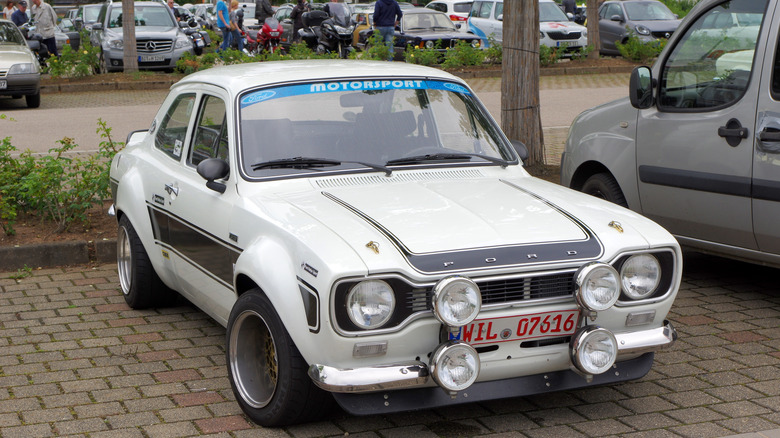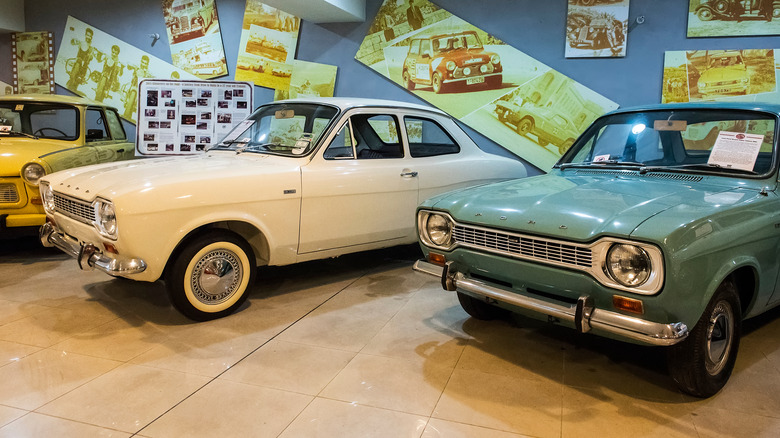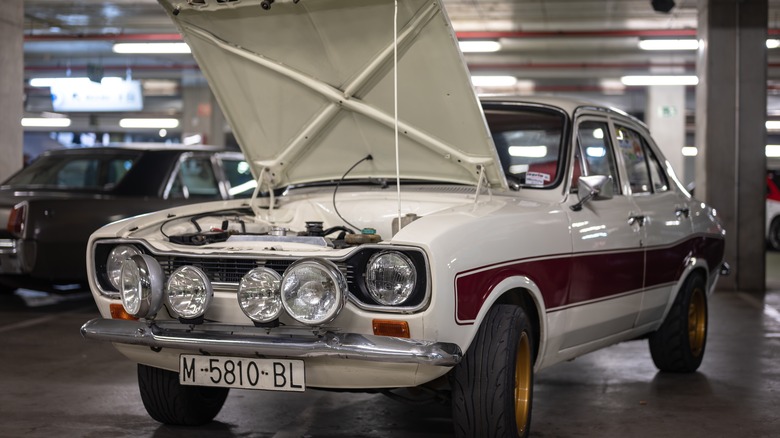Here's What Made The First Generation Ford Escort Such An Incredible Rally Machine
In its way, the Ford Escort has proven to be quite the supercar itself. A highly successful competitor for decades, the venerable Escort is so much more than a popular family vehicle. It's a true monster of the rally world. More than that, it's been so since the first model was released almost 60 years ago.
Let's look at exactly how Ford developed its rally reputation so early, how the model was modified to maintain it, and how many great performances the first-generation Escort was able to put in.
Ford already had experience developing an accomplished rally vehicle. The Lotus Cortina, which essentially consisted of a Cortina equipped with the Lotus Elan's Twin Cam in a stylish collaboration, made its rally debut in 1963. That year, it achieved a fourth-place performance, but its early races were marked by issues regarding the rear axel and the A-Frame body, which wasn't well suited to the rigors of rally racing. It was time for a rethink, one that would pay dividends.
The development of the First Generation Ford Escort
The company needed a rally vehicle that could improve on the performances the Lotus Cortina offered throughout its rally life but which retained the sense of style and desirability that was essential for the appeal of such competitive vehicles (which, under homologation rules, boasted commercial counterparts that viewers and fans could purchase). This vehicle would be the Ford Escort.
The Escort was created by building upon the familiar Ford Anglia format. In a UK advert from the time (via Silodrome), titled "Why We Killed The Anglia," the company introduced the Escort as "The Successor." To develop it, it states, a synchromesh gearbox, bowl-in piston engine, and Aeroflow system were added, as was a new space-saving exterior. The result was a vehicle Ford claimed had a faster 0-60, promised better handling, and, according to the manufacturer, "we simplified one or two working parts [...] so servicing is needed half as often."
All of these advancements, naturally, would be huge boons for a rally-inclined vehicle.
The first generation Escort arrived in the late 1960s, and development in European plants made the vehicle more accessible for various competitions, as well as helping to bring it to worldwide attention. Its Ford Kent Crossflow engine was also available in 1.1 and 1.3-liter varieties, making it versatile and powerful. Later Ford models, like the RS200, would continue to define those traits and carry that torch.
The First Ford Escort's Performances As A Rally Car
The Escort made its RAC debut in 1968, driven by Timo Mäkinen. Only a technical issue prevented Mäkinen from claiming victory, but there was a lot of success in the car's future: eight RAC wins in a row, three of which would be claimed by Mäkinen. The key to its continued success wasn't only the initial winning formula but the support the model continued to receive afterward.
John Davenport, who competed in that 1968 rally, later stated (per Hagerty) that chief mechanic Bill Meade took a hands-on approach to keeping the Escort in top condition. "we sat [him] in the back and took him over a stage of rutted snow," Davenport is quoted as saying. "He couldn't believe how out of control it was. That stimulated Ford to put the shockers directly over the axle – and the car promptly started winning." The driver attributes some of the Escort's success to the "constant development" applied.
The BDA (Belt Drive, Type A) engine of 1970's Escort Rallye Sport 1600 represented the first-generation Escort pinnacle. It was so named for its 1,600 cc output, which opened up further competition. At the East African Safari Rally in 1972, Hannu Mikkola became the very first person who wasn't from Africa to win the grueling contest. He did so in an RS 1600, in a moment that defined everything the first-generation Ford Escort achieved in rally races.


